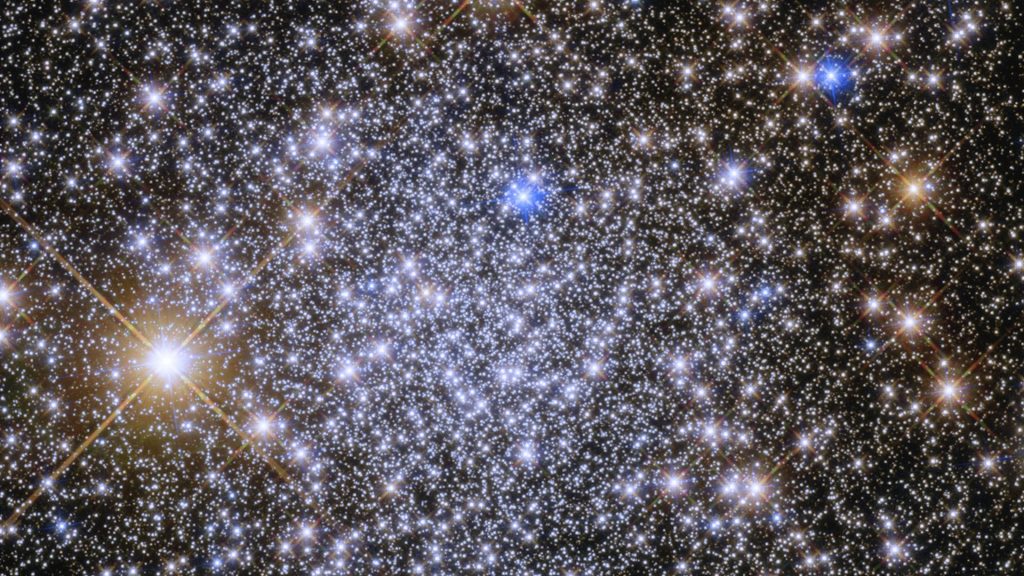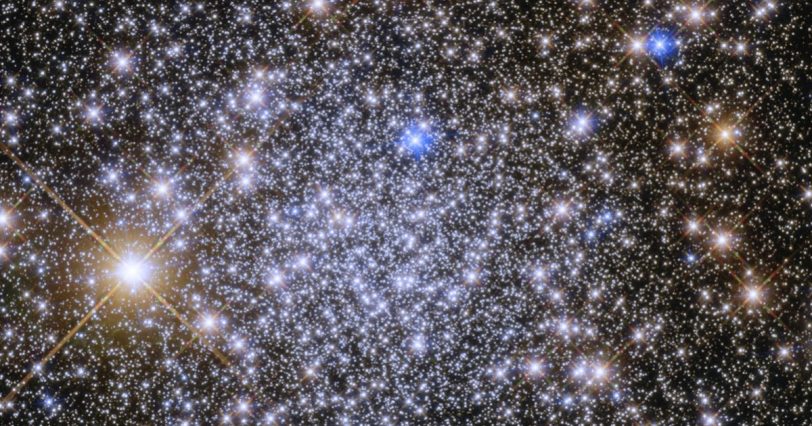A gleaming new Hubble Space Telescope image captures the glow of thousands upon thousands of stars in an ancient globular cluster near the Milky Way’s heart.
A globular cluster is a massive collection of stars that are attracted in close and tied together by their mutual gravitation, with many stars only a light-year or two apart. The globular cluster in the new Hubble Space Telescope image, known as Pismis 26, was discovered in 1959 by astronomer Paris Pismis at the Tonantzintla Observatory in Mexico.

The stars in Pismis 26 have a nearly spherical structure. The cluster appears to be mostly red stars, with a few brighter blue stars along the edges. These colors are due, in part, to the cluster’s age, which is estimated to be around 12 billion years, implying that it contains many of the oldest stars in our galaxy, if not the universe. These stars are most likely a much deeper red than the bright-blue stars typical of large, young, fast-burning stars that die out much sooner, or the typical yellow star that straddles the two.
Additionally, the cluster is heavily metallic, which means that its stars have higher concentrations of elements heavier than hydrogen and helium than stars like the sun do. According to a NASA statement, scientists believe these stars are particularly rich in nitrogen, implying that the globular cluster’s star population spans a range of ages.
Furthermore, the cluster’s color is influenced by a phenomenon known as reddening, which occurs when dense stellar dust blocks shorter-wavelength blue light while allowing longer-wavelength red light to pass through more easily.
Pismis 26 is close to the galactic bulge that surrounds Sagittarius A* (Sgr A*), the Milky Way’s supermassive black hole. Because of the presence of Sgr A* and its incredible gravity, as well as that of all the material surrounding it in the bulge and the dense sphere of stars it contains, this region of the galaxy is especially dust-heavy.
READ MORE: Laniakea – The Name of Our Home Supercluster (Video)

All of the most latest and intriguing Space and Astronomy products in one place! In our new Space Store from your favorite website, you’ll find an extremely wide range of items and gift ideas organized into various categories.


